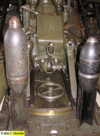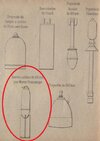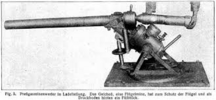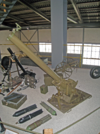British Ordnance Collectors Network
You are using an out of date browser. It may not display this or other websites correctly.
You should upgrade or use an alternative browser.
You should upgrade or use an alternative browser.
Unknown bomb
- Thread starter pzgr40
- Start date
Seems to be this one - the Pre-WWII first generation Swiss 12kg Splitterbomb (the later model had a different shape and dimensions)
This photograph comes from a display at the Swiss Air Force museum - seems to have been repainted in non-original colors. Original colors are closer to the one on the 2nd photograph (from a display at the RUAG Ammotec factory museumn, the company that has been producing bombs for the Swiss air force since the 1930s and generally speaking weapons for the Swiss Army since 1863)
I have no further details on this bomb - what I have concerns the later model.
Thus bomb was the standard armament of the Swiss Dewoitine D27 - a 1930s fighter used also in Switzerland for air support.
Your sample looks very authentic and is probably original. Where did you find it?



This photograph comes from a display at the Swiss Air Force museum - seems to have been repainted in non-original colors. Original colors are closer to the one on the 2nd photograph (from a display at the RUAG Ammotec factory museumn, the company that has been producing bombs for the Swiss air force since the 1930s and generally speaking weapons for the Swiss Army since 1863)
I have no further details on this bomb - what I have concerns the later model.
Thus bomb was the standard armament of the Swiss Dewoitine D27 - a 1930s fighter used also in Switzerland for air support.
Your sample looks very authentic and is probably original. Where did you find it?



Last edited:
Post ww1 10.5cm bomb fuzed Bz37 filled 2kg TNT. 12kg is different (real bomb shape).Minenaz do you have more details on this bomb - in my records it appears as "12kg splitterbombe" but you seem to have a more precise identification "6,5 kg flieger sprengbombe".
Your pictures of 6.5kg are correct but for Blind model (grey body with green bands).
Live bomb is painted grey with yellow head and a yellow band on body.
JulienCD68
Well-Known Member
Can someone explain the role of the holes seen on the fin of the bomb in the photo posted at the beginning of this thread ?
It is a feature that I have seen in other Swiss bombs -for instance this one - the pre-WWII 50kg Ubung Flugzeug Bombe (inert dummy/exercise bomb) - according to the notice under it - painted in black on the lower rack:
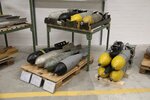
It is a feature that I have seen in other Swiss bombs -for instance this one - the pre-WWII 50kg Ubung Flugzeug Bombe (inert dummy/exercise bomb) - according to the notice under it - painted in black on the lower rack:

Last edited:
Hi Dreamk don't know the answer to your question today.
Maybe a type of literature where there is a potential to read it will help you
https://fliegerbewaffnung.ch/produkt/fliegerbewaffnung/
sample ...
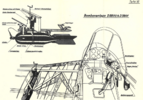
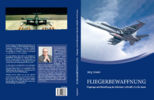
Akon
Maybe a type of literature where there is a potential to read it will help you
https://fliegerbewaffnung.ch/produkt/fliegerbewaffnung/
sample ...


Akon
Akon I know about this book - it is in fact a mini encyclopedia of the Swiss Air foces, aircraft, engines, guns, bombs, etc.., therefore it is a compilation of short summaries - for bombs, from what I have seen, they are rather good I must say - but only summaries with very limited iconography, as the scope of this book is very wide - this is its main shortcoming (beyond being somewhat overpriced - but this last point can be discussed in face of the huge ammount of work involved in the creation of such a book).
There is a lot of quality material that was not used in this book officially dedicated to aerial armament (but not really, as I already stated) such as the excellent bomb posters from the Thun munition fabrik / forces d'aviation suisse, that appear from time to time at swiss auctions - I posted some time ago on this forum such a poster of the 3kg splitterbomb.
Anyway - the answer to my question is not to be found in this book.
There is a lot of quality material that was not used in this book officially dedicated to aerial armament (but not really, as I already stated) such as the excellent bomb posters from the Thun munition fabrik / forces d'aviation suisse, that appear from time to time at swiss auctions - I posted some time ago on this forum such a poster of the 3kg splitterbomb.
Anyway - the answer to my question is not to be found in this book.
Last edited:
....HI DreamkAkon I know about this book - it is in fact a mini encyclopedia of the Swiss Air foces, aircraft, engines, guns, bombs, etc.., therefore it is a compilation of short summaries - for bombs, from what I have seen, they are rather good I must say - but only summaries with very limited iconography, as the scope of this book is very wide - this is its main shortcoming (beyond being somewhat overpriced - but this last point can be discussed in face of the huge ammount of work involved in the creation of such a book).
There is a lot of quality material that was not used in this book officially dedicated to aerial armament (but not really, as I already stated) such as the excellent bomb posters from the Thun munition fabrik / forces d'aviation suisse, that appear from time to time at swiss auctions - I posted some time ago on this forum such a poster of the 3kg splitterbomb.
Anyway - the answer to my question is not to be found in this book.
This is, of course, the problem of every author of a work that takes too wide a section, whether temporal or factual.
And now a question to the plenary
Then there is another source of knowledge: The manufacturer and its documentation.
And another question for you, dear readers and contributors:Where is the collection of documentation (text + drawings) of that arms factory in Thun (?) located in the state archive, in the factory archive or somewhere else?
I assume that there was no shredding, or communism like in the countries of Eastern Europe where they treated the documentation disrespectfully.
Akon
Great Picture Akon - the legend of this display reads:
10,5 cm Pressgasminenwerfer 1917
Designation: 10.5 cm Mine Launcher Gun Ord. 1917
Manufacturer: Machine Factory Schleitmühle, Machine Factory Erhardt + Sehmer Saarbrücken (Germany)
Year of Production: 1917
Procurement: After a test phase in Switzerland during the First World War, the Federal Council decided on April 7, 1917, at the request of the Army Artillery Chief, to procure 50 German compressed air mine launchers with 25,000 rounds and 6 compressor systems.
Caliber: 10.5 cm
Range: 800 meter
Special Features: mine with 4 control vanes, weight 6.5 kg, explosive approx. 2 kg
intended for 4 fortress sectors;
used in the Swiss Army until the end of the 1930s.
The remaining ammunition stocks were converted into aerial bombs. 45° and 65° iron wheels, manual firing
The gun on display bears the number 1 (first of the 50 guns delivered)
10,5 cm Pressgasminenwerfer 1917
Designation: 10.5 cm Mine Launcher Gun Ord. 1917
Manufacturer: Machine Factory Schleitmühle, Machine Factory Erhardt + Sehmer Saarbrücken (Germany)
Year of Production: 1917
Procurement: After a test phase in Switzerland during the First World War, the Federal Council decided on April 7, 1917, at the request of the Army Artillery Chief, to procure 50 German compressed air mine launchers with 25,000 rounds and 6 compressor systems.
Caliber: 10.5 cm
Range: 800 meter
Special Features: mine with 4 control vanes, weight 6.5 kg, explosive approx. 2 kg
intended for 4 fortress sectors;
used in the Swiss Army until the end of the 1930s.
The remaining ammunition stocks were converted into aerial bombs. 45° and 65° iron wheels, manual firing
The gun on display bears the number 1 (first of the 50 guns delivered)


